LDC’s Iten Daily Diaries
The story of an inspiring trip to Kenya
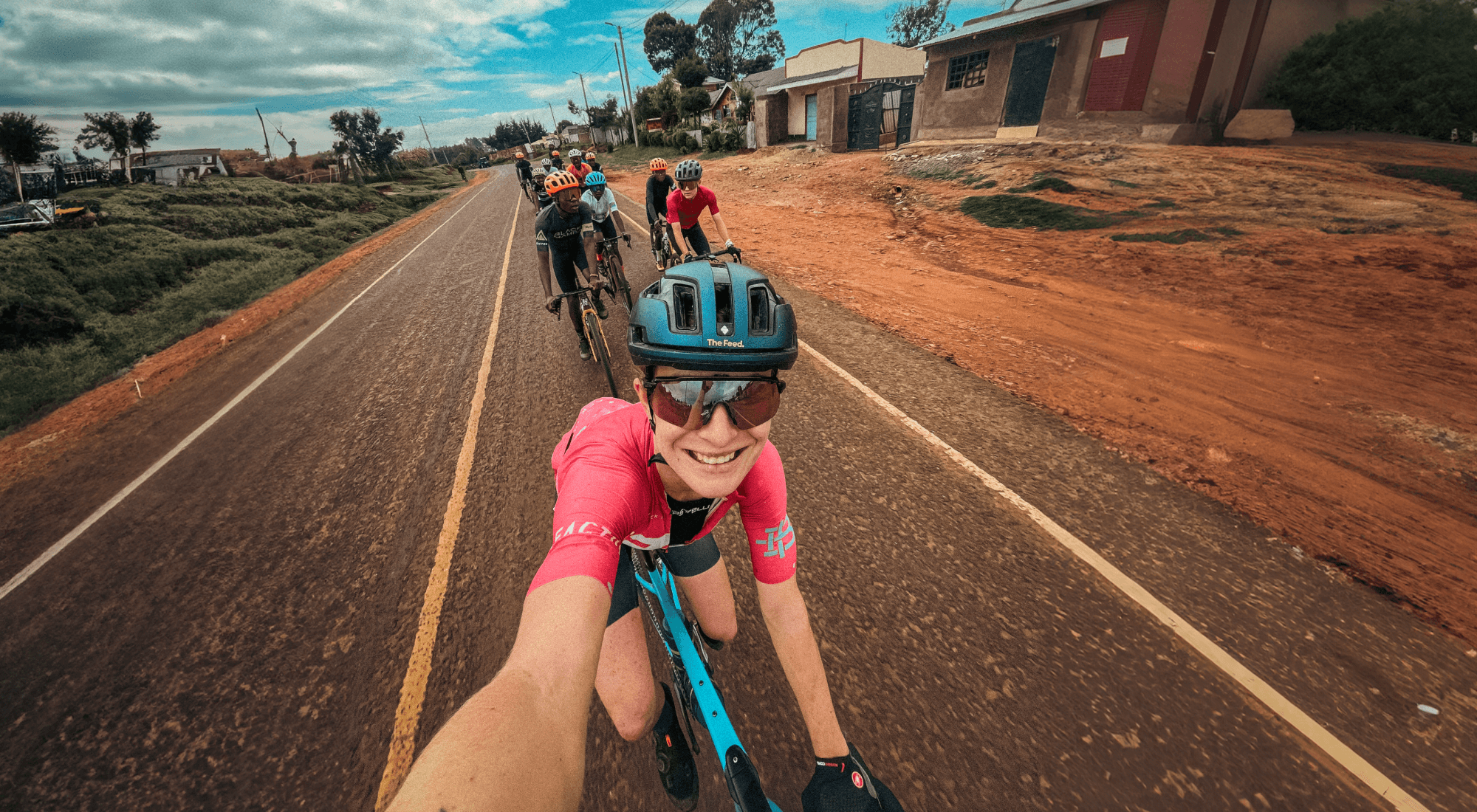
Lauren De Crescenzo and the athletes from Team Amani and the Black Mamba development team have more in common than the fact that they share sponsors. They are equally passionate about cycling and about maximizing their potential, including their potential beyond cycling. The bike of course offers comfortable common ground to start the conversation; but once that conversation begins, the real connections are made.
Capitalizing on over 15 years of experience as a professional cyclist, Lauren is joining the Team Amani Women’s Camp this November, taking place in Iten, Kenya. The camp is dedicated to exchanging knowledge, ideas, stories, and those things that make cycling joyful for all involved. It also looks like the Kenyan terrain will challenge even Mile High-raised LDC, who never saw a mountain she was afraid to climb.
Lauren will be sharing her experiences through a series of daily diary entries. Be sure to check back frequently to read how her 12 days in Iten unfold.
Diary Entry #1: Touching down in Kenya (11/18)
As I write this, I’m just an hour away from landing at the Nairobi airport. It’s been a marathon journey to get here—a long haul that began in Denver with a quick stop in Detroit, followed by an eight-hour flight to Amsterdam and another eight hours to Nairobi. Add a 10-hour time change, and you can imagine the sensations. But the excitement of what lies ahead makes every moment worth it.
After landing in Nairobi, I’ll catch a few hours of rest at an airport hotel before boarding a 6:30 a.m. flight to Eldoret. It’s a one-hour flight to my final destination: Iten, Kenya, also known as the “Town of Champions.” Iten sits at an altitude of 7,500 feet and is known for producing some of the world’s most elite runners.
Sharing the knowledge
I’m here for the Team Amani training camp. I have the opportunity to join the camp, as Factor Bikes and Black Inc support us both. At camp, I’ll share my knowledge and experiences from nearly 15 years of cycling and racing. Cycling has brought me through countless highs and lows, but my love for the sport has never wavered. That passion is something I hope to pass on to the remarkable women at this camp.
This trip marks a milestone for the women’s team at Team Amani. For the first time in its history, the team is dedicating time and resources exclusively to the women’s program—a program that has grown exponentially over the past few years. I’m honored to contribute to this growth by leading a workshop titled “Women in Sport” (working title) and co-facilitating a women-only bike maintenance and repair clinic with Anna from SRAM.
The goal is simple: to inspire these women to embrace their potential, to equip them with the tools they need to thrive, and to show them what’s possible when they commit to their goals. Whether it’s sharing training advice specific to women’s physiology, building confidence in technical skills, or teaching them how to plug a tire quickly, I want these female athletes to walk away feeling empowered to take on whatever life throws at them.
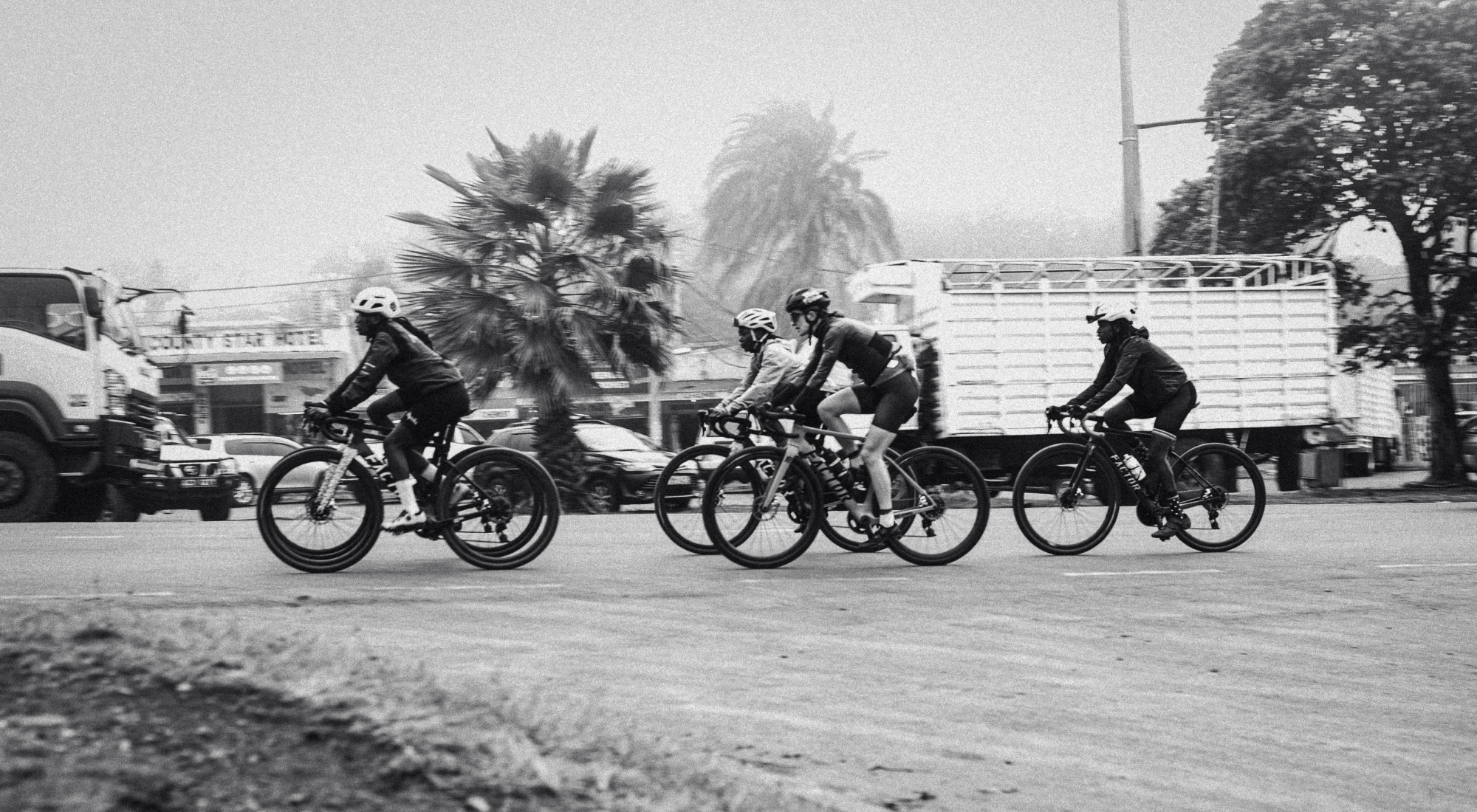
Photo credit: Team AMANI
Stay tuned for more updates from Kenya! First, time for a long nap to adjust to the 10-hour time change.
Diary Entry #2: Settling In (11/19)
I just woke up from a much-needed 12-hour slumber—4:30 p.m. to 4:30 a.m. Adjusting to East African time in Iten, Kenya, is no small feat, given the 10-hour difference from Mountain Standard Time in Boulder, Colorado. Thanks to a few PERC Coffee instants, I’m energized and ready for the first official day of Team Amani camp. This morning, riders will arrive from all over East Africa, and I’ll have the privilege of joining the Black Mamba Development Team for a relaxed 1.5-hour spin. The Black Mambas are on a trajectory toward becoming part of Team Amani, and yesterday, I had the pleasure of meeting some of them.
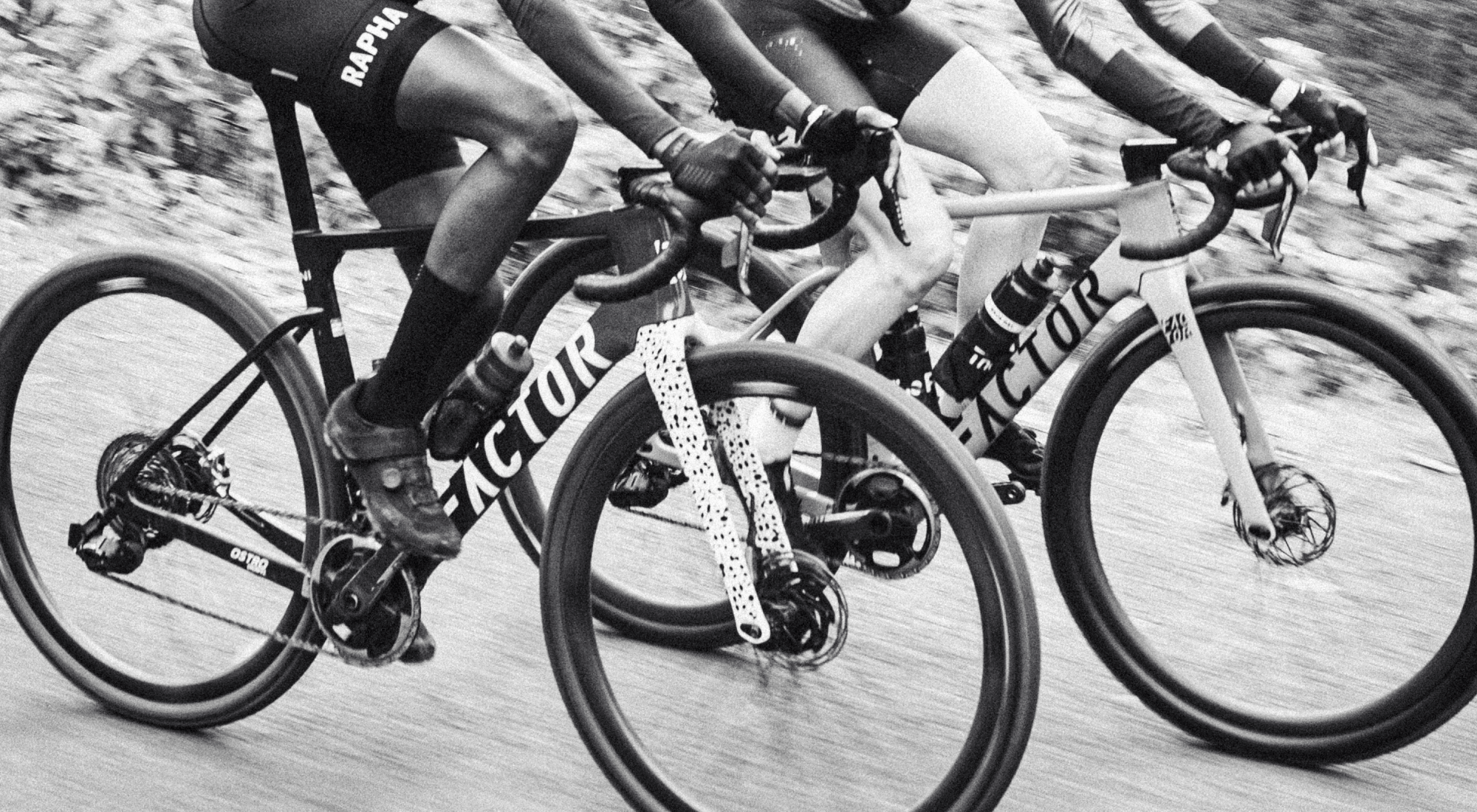
Photo credit: Team AMANI
I spent time exploring the Team House and loosening up my airplane legs on a Wahoo KICKR Move. The house itself is a cyclist’s dream: a paved pump track for practicing skills, a chicken coop that keeps everyone fueled with fresh eggs, and a bottom floor with nine individual rooms for staff. Upstairs, the dorms are split into separate wings for men and women, and many Black Mamba riders live here full-time. My Factor OSTRO Gravel bike already feels right at home, hanging alongside many other Factors—each customized with paint jobs for the teams.

Factor OSTRO Gravel / Heritage Blue
Making connections
One of my favorite moments yesterday was meeting Mary Aleper, a 20-year-old Ugandan rider on the Black Mamba development team. She was fascinated by my ride on TrainingPeaks Virtual and dissected every statistic with impressive attention to detail. As we shared stories, we realized we’d raced together at the first-ever UCI Gravel World Championships in Italy in 2022. She was 18; I was 32.
Mary’s passion and eagerness to learn reminded me of my younger self—the 20-year-old "LDC" who soaked up every bit of wisdom from older, more experienced women. Now, it’s my turn to pass on the torch. Her enthusiasm inspires me, and I can’t wait to see how far she goes in this sport.
I’m particularly excited for the evening session, where I’ll meet more women from Team Amani and the Black Mambas. It’s shaping up to be an unforgettable experience.
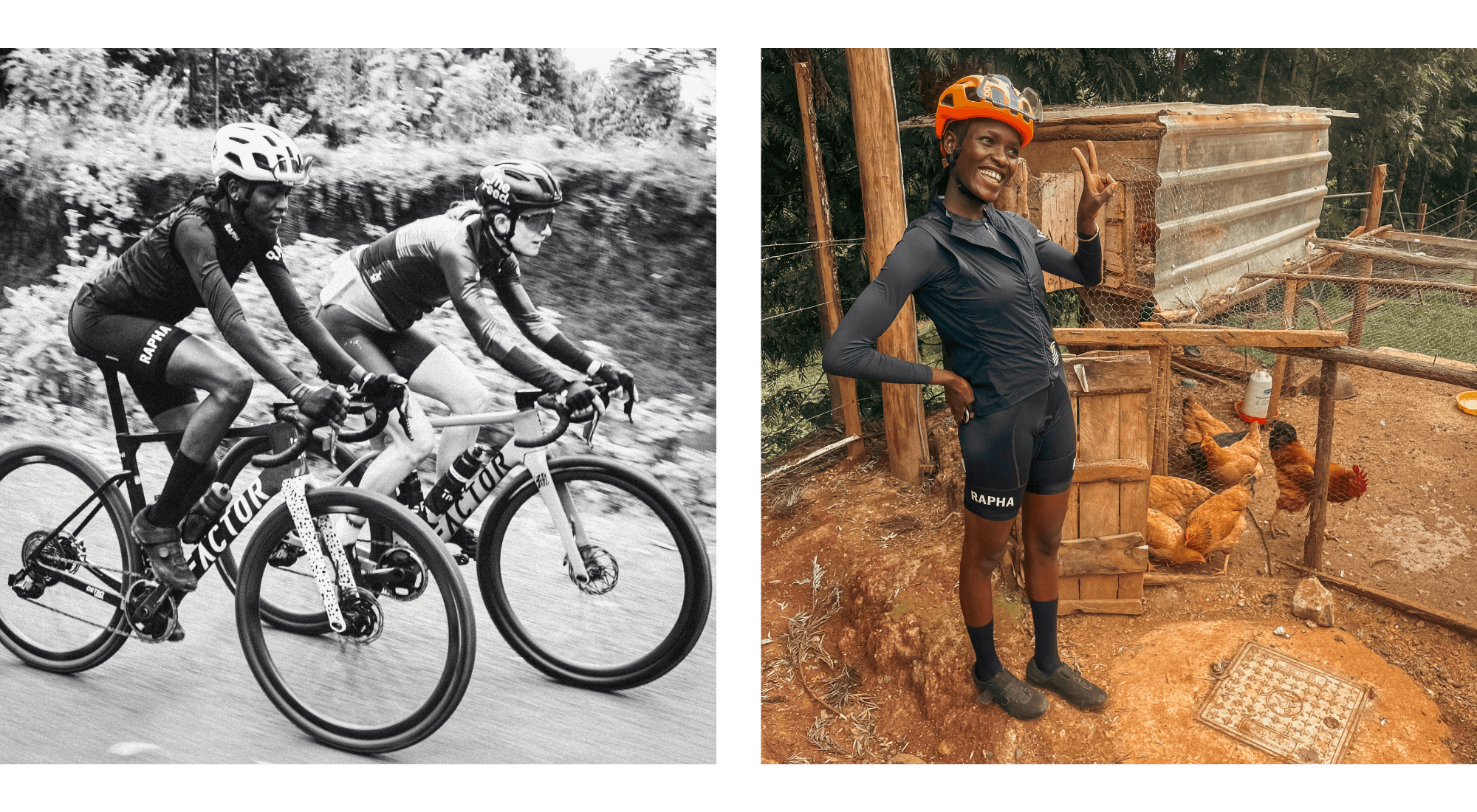
Photo credit: Lauren De Crescenzo / Team AMANI
Diary Entry #3: Official Day 1, Part 1 (11/19): First Ride with the Black Mambas and Team Amani
This morning at 9 a.m., I had the privilege of joining the Black Mambas and a few Team Amani riders for my first ride in Iten. It was an unofficial spin before the camp officially kicked off at 5 p.m., and it gave me a taste of the local roads—and massive speed bumps! The biggest adjustment for me? Remember to ride on the left side of the road instead of the right! We tackled an “easy” spin of about 30 miles with 2,000 feet of climbing at 8,000 feet elevation. Right out of the gate, the climb from the Team Amani driveway was a wake-up call—a bumpy dirt road with brutally steep pitches of up to 20%. At the top, we turned right onto a technical gravel section, requiring single-file riding to navigate a tricky stretch where a fall could mean tumbling down a steep slope.
Once we hit the pavement, the energy shifted. Two female riders took the lead up a long, gradual climb with impressive strength and consistency. I loved how the men in the group respected their pace instead of taking over. That dynamic feels rare compared to many U.S. group rides I’ve experienced.
A region proud of its champions
What stood out most, though, was the support along the way. Kids lined the roads, waving and cheering with bright smiles, while drivers and locals offered nothing but friendliness. Not once were we told to "Get off the road!" The respect for athletes here in Iten, the “Home of Champions,” is palpable.
Back at the Kerio View Hotel, I noticed a placard commemorating Annemiek Van Vleuten’s stay in 2022. Fun fact: I realized I rode many of the same segments she did back then—thank you, Strava, for the confirmation! It’s inspiring to think about the history of endurance sports in this place and the countless champions who’ve trained here.
As the official start of camp approaches, I’m already inspired by the riders, the culture, and the beauty of Iten. If today’s “easy” ride is any indication, this week will be both challenging and unforgettable.
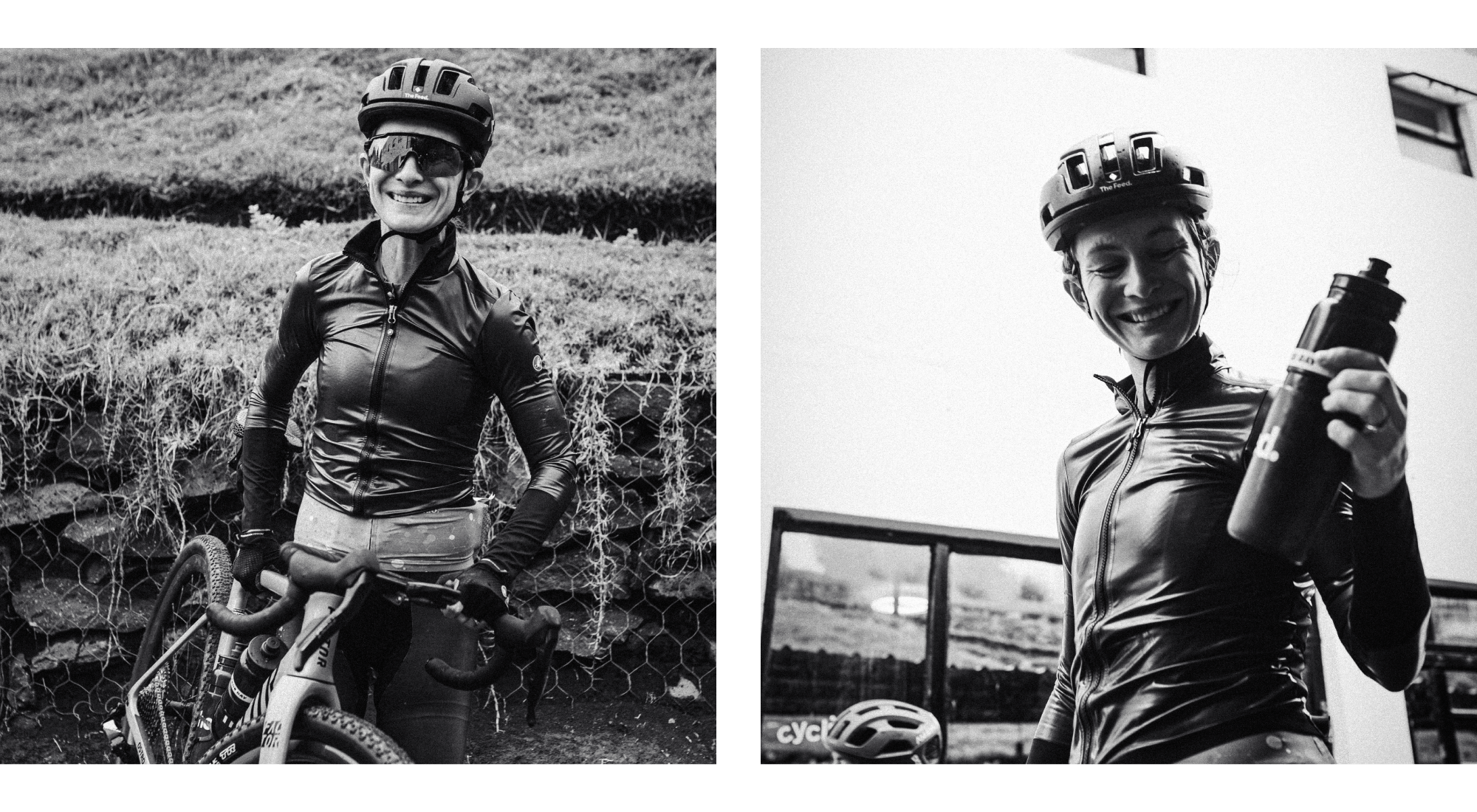
Photo credit: Team AMANI
Official Day 1, Part 2 (11/19): First Impressions and Big Picture Goals
This evening marked the official kickoff of Team Amani camp. I rode my Factor OSTRO Gravel through the bustling streets of Iten. Along the way, I quickly stopped at an ATM to grab a few Kenyan shillings and arrived at the Team Amani house just in time for the 5 p.m. camp start.
First, here are two important terms I’ve come to appreciate:
Amani: A Swahili word meaning “peace.” The name embodies a mission of unity, harmony, and collaboration through cycling fostering opportunities for athletes from diverse backgrounds.
Black Mamba: The development team’s name draws from the famed black mamba snake—one of the fastest and most agile in the world. For the team, it symbolizes speed, skill, and resilience—traits critical for both racing and personal growth. It’s also a meaningful nod to African pride, as the black mamba is native to the region.
Camp Kickoff:
The evening started with opening remarks from none other than Tsgabu Grmay, the first Ethiopian pro cyclist to compete in the Tour de France, Giro d'Italia and La Vuelta, a UCI race winner, and one of only 22 men selected for the Life Time Grand Prix. Tsgabu will work alongside me as a coach, and his words resonated deeply. He reminded the riders of three key principles:
Be present.
Pay attention.
Ask questions.
Management echoed a theme that struck a chord: “You can be the fastest in November, but what matters is how fast you are in season.” As someone who has fallen into the trap of overtraining in the off-season, I couldn’t agree more. November should be about “real” Zone 2, long steady rides, building volume, mitochondrial adaptation, and honing skills—not peaking for the group ride.
We wrapped up this portion of the evening with introductions from all the camp leaders, including myself. We reassured the riders that we will work to make this camp their best experience possible and support their journey on and off the bike.
Dinner and Management Discussions
From 6 to 8 p.m., the management team gathered for dinner, a local favorite—rice, cabbage, carrots, and stew—a hearty meal that perfectly complemented the day’s efforts. Over dinner, we discussed the future of the Team Amani program, looking not just at the next 10 days but at the next 3 to 10 years. The conversation centered around:
The resources needed to achieve epic team success.
Key goals for the camp and how we can best support the riders.
How each of us could utilize our strengths to elevate the team.
Sitting in this meeting as part of the management team, rather than as a rider, felt profound. I’ve spent years focusing on my performance, but now I can give back to a sport that has shaped my life. It’s fulfilling to shift focus to the next generation of cyclists, helping them unlock their potential while contributing to the bigger picture of what Team Amani can achieve.
The evening ended with excitement and a clear vision for the days ahead. I can’t wait to see what these talented riders accomplish as we tackle challenges together—on the bike and off.

Photo credit: Team AMANI
Day 2, Part 1 (11/21, MORNING SESSION)
For the first official ride of camp, we split into smaller groups to reach our individual training goals more effectively. I joined a group with four other women, Mary, Claudette, Kendra, and Deborah, and we set off on a 55km (about 30 miles) endurance ride: half pavement, half gravel. Riding through African villages felt almost surreal. We were all riding our Factor OSTRO Gravel bikes, me in a sleek Gabba-R Castelli jacket, and the rest dressed head-to-toe in Rapha. The reactions from onlookers were electric—curiosity and excitement radiated from every wave and smile.
How Does Kenya Gravel Compare?
It’s a world apart from the gravel I know in Colorado. The terrain here is rocky, raw, and often offers just one “good” line. It reminds me of the Georgia clay I used to ride in Georgia, but here everything is more dramatic—deep red dirt, jagged rocks, big rocks. I was relieved I’d kept the inserts in my Maxxis Rambler 50s after The Big Sugar Classic —this terrain is unforgiving.
A Flat, a Pump, and a Lesson
As we settled into our ride, we caught up to the group of men who had started just ahead of us. Tsgabu Grmay, 2025 Lifetime Grand Prix racer, experiencing his first-ever ride on his Factor LANDO XC, had a sealed flat that left his tire soft. His group didn’t want to waste their limited CO2 supply, so they asked if anyone had a hand pump. Luckily, I had packed my handheld electric pump since getting CO2 cartridges across the Atlantic was not an option. It was a reminder of the importance of being prepared—bring a pump if you want to save your CO2 for emergencies and races.
After reinflation, they zipped ahead, but we soon caught them again when another rider flatted his front tire. Once again, my trusty pump saved the day, and I shared tips on tire pressure. As we got moving again, I joked with the ladies about how much the men needed us to save their ride—it was a lighthearted moment that I hoped left them feeling empowered.
The Driveway Challenge
A few chunky climbs and equally chunky descents later, we arrived back at the Amani House. Despite all the riding, I still think the hardest part of the day was tackling the infamous "Driveway." It’s a beast of a climb, maxing out at a brutal 20% grade. It’s tough as a ride opener and tricky as the final obstacle after hours in the saddle. On the descent, one woman wasn’t confident and decided to walk her bike. I shared some tips that have served me well over the years: shift your weight behind the saddle, extend your arms slightly backward, and—most importantly—loosen your grip with “Jazz hands!” to stay relaxed and in control.
Beyond the Driveway
But the challenge doesn’t end at the top. Turning right leads to a narrow single track with a steep drop-off—an intimidating feature for anyone new to gravel. Riding here feels like a crash course in gravel mastery. I joked that you could become a great gravel racer simply by training on this driveway and the rugged roads around the neighborhood. It’s intense!
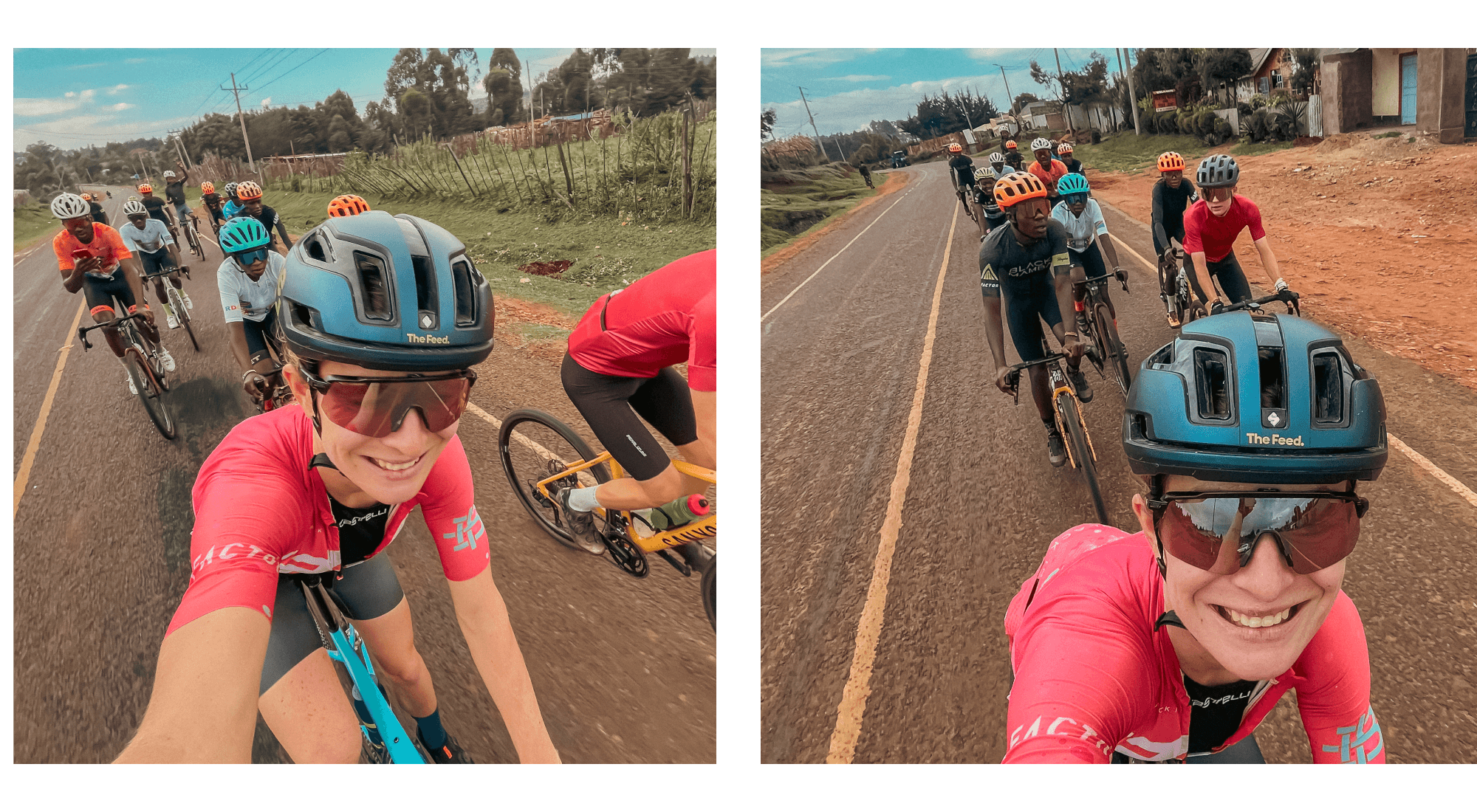
Day 2, Part 2 (11/21)
The second half of the day brought us under the canopy for a packed schedule of team sessions focused on media training, storytelling, and logistics—key skills for any pro rider.
Media Training: Telling Your Story
We started by diving into media training, covering how to represent yourself and your sponsors effectively on social media, in interviews, and on the podium. The main themes of the training were telling your personal story, embracing who you are, and showing your unique journey as an athlete. The focus was authenticity; being yourself and connecting with your audience. It was a great opportunity to reflect on how far the women here have already come—they’re passionate, driven, and have powerful stories that the world is ready to hear.
Race Schedule: "Eyes on the US Calendar"
The next session was all about planning. We reviewed the race calendar, with riders who had competed in specific events sharing their insights. When it came to the US gravel scene, all eyes were on me. I broke down some of the major races, explaining what to expect in terms of terrain and competition.
One of the key messages I wanted to convey was this: if you can handle Kenyan gravel, you can handle anything. The rocky, unpredictable surfaces here are next-level compared to the more polished gravel of the US and Europe. I reassured them that the technical skills and mental toughness they’re developing in Kenya will make events like Unbound Gravel—arguably one of the hardest gravel races in the world—feel manageable.
Finley's Travel Session: Packing Smarter
The final session of the day was led by Finley Newmark and focused on a critical aspect of racing: international travel logistics. Finley had prepared an interactive exercise simulating the experience of traveling across borders with gear, bikes, and everything else we need for competition. From selecting the right bags to packing efficiently, every detail was covered. Finley shared practical advice, like what to pack in your carry-on versus checked luggage, how to prevent bike damage during transit, and even tricks for avoiding excess baggage fees.
For me, it was a walk down memory lane—10+ years of trial, error, and sometimes chaotic airport experiences, all condensed into one highly-practical session.
This session wasn’t just about logistics—it was about empowerment. By the end, the group felt equipped to tackle the unique challenges of traveling for international races, ensuring they’ll arrive at the start line ready to give it their all.
Managers’ Meeting Over Dinner
The evening brought a shift in focus as we gathered for a managers’ meeting over a hearty dinner of rice, cabbage, and stew. This was a discussion-heavy session centered on the big-picture goals for the Amani and Black Mamba programs, and new satellite programs across East Africa aimed at identifying talent to feed into the bigger programs.
We talked about team performance and how to refine our strategies to support the riders’ development. Plans for the next season were laid out, including which races the team would prioritize and how we’d structure training camps to maximize growth.
We brainstormed ways to expand outreach, create pathways for young athletes, and provide the resources they need to excel internationally. It was inspiring to hear everyone’s ideas, from developing grassroots programs to ensuring the riders have access to top-tier equipment and coaching. As the conversation turned toward long-term goals, it was clear that this wasn’t just about racing—it was about building a sustainable ecosystem for cycling in East Africa. Sitting there, surrounded by a team so committed to making a difference, I couldn’t help but feel a sense of excitement for the future.
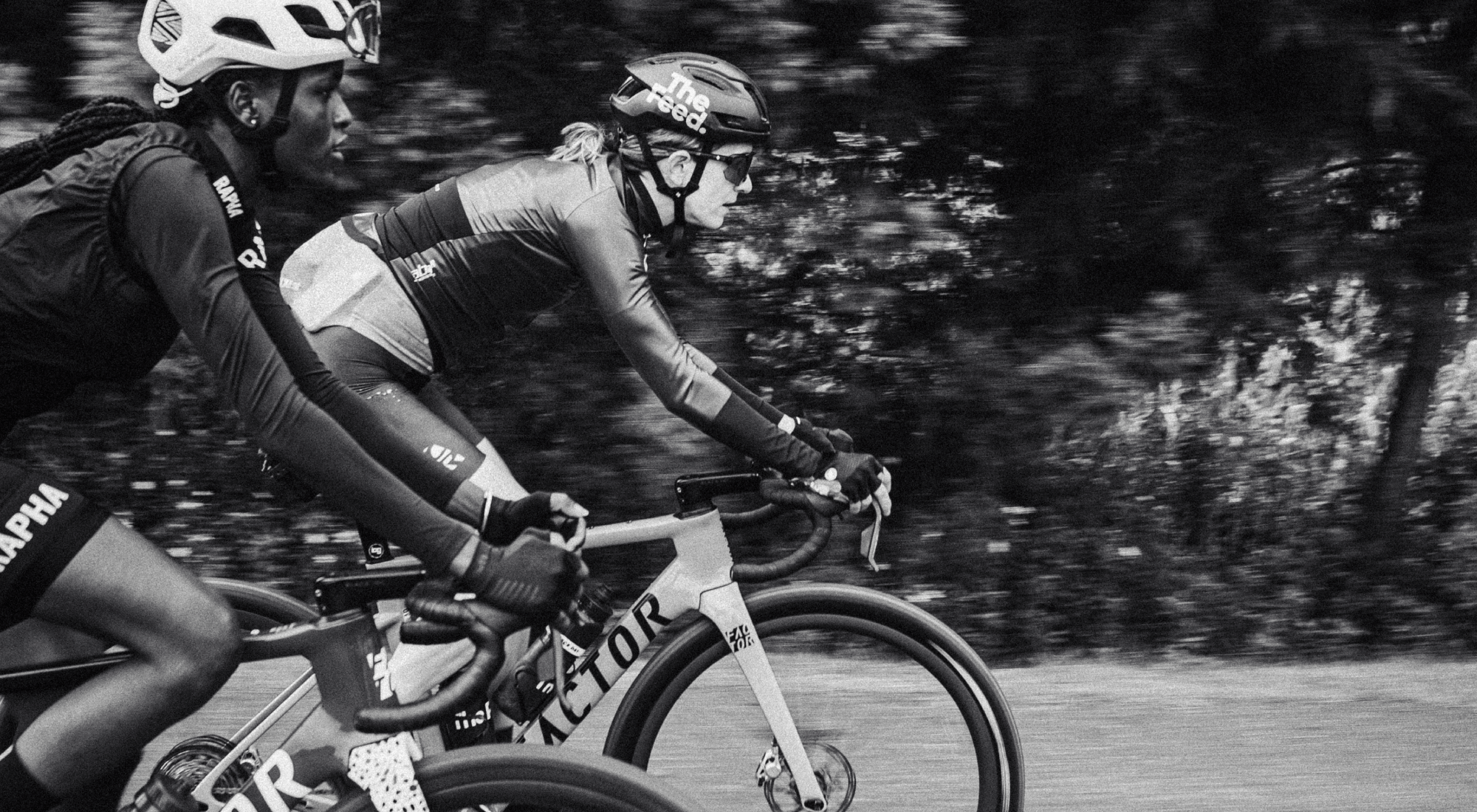
Photo credit: Team AMANI
The road ahead is ambitious, but it was made clear: East Africa is ready to race bikes.
Stay tuned for more updates from Lauren De Crescenzo .

© 2025 Factor Bikes. All rights reserved / Privacy Policy |Terms